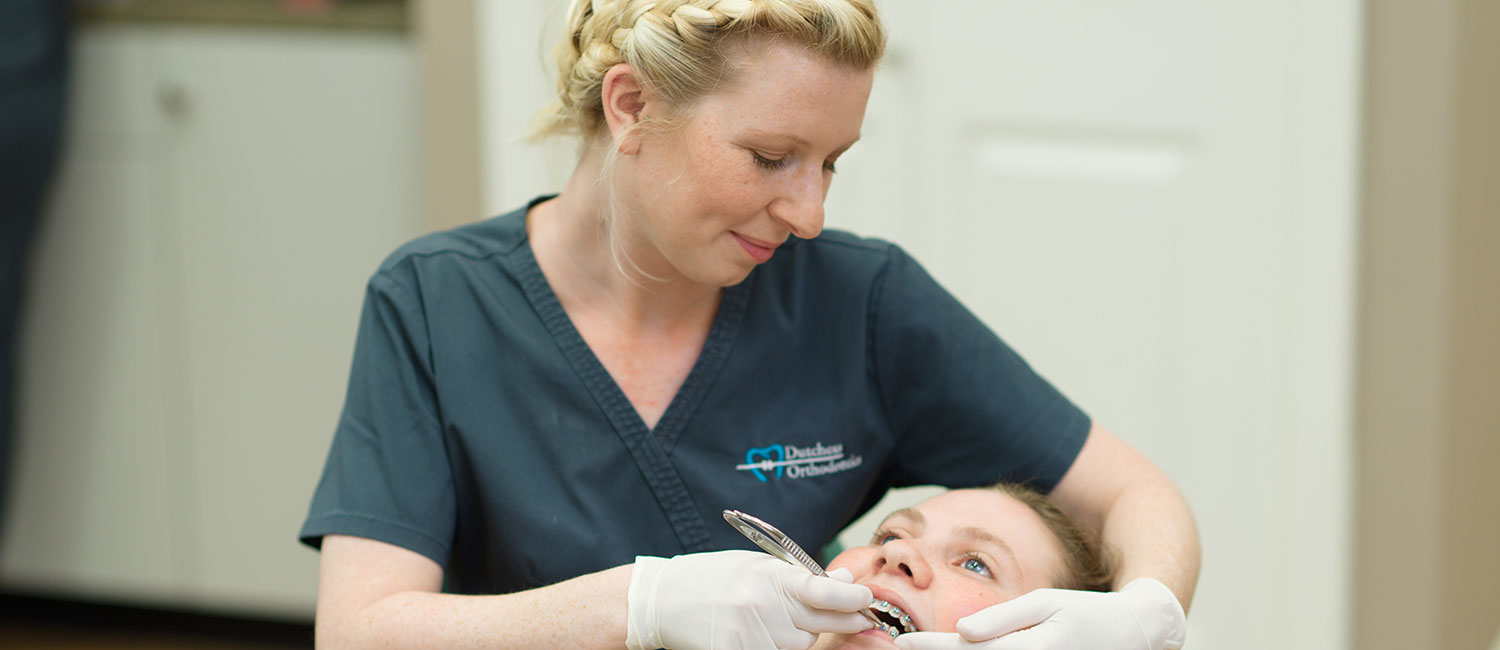
Orthodontic Treatment
The American Association of Orthodontists recommends all children get a check-up with an orthodontic specialist no later than age 7. By the age of 7, the first adult molars erupt, establishing the back bite. During this time, we can evaluate front-to-back and side-to-side tooth relationships.
Early orthodontic treatment is not necessary for all patients and many times we will simply encourage you to visit us again as your child grows. However, early treatment may be necessary for the following problems:
- Protruding teeth are more susceptible to trauma.
- Crossbites can result in asymmetrical growth and uneven tooth wear. Watch Video
- Openbites resulting from habits such as thumb sucking or tongue thrusting can permanently deform the jaw bones.
- Severe Crowding can cause early loss of baby teeth and impaction of permanent teeth.
Most forms of early treatment are not full braces. Usually a retainer or other appliance, such as an expander, is used to solve the main problem. Then, once most or all of the permanent teeth are in, full braces are usually necessary.
It is never too late to straighten your teeth! As long as your general dentist feels that your gums and teeth are in good health, it is perfectly safe to have orthodontic treatment. This includes traditional braces as well as clear aesthetic braces, Invisalign and clear aligners.
Benefits of Invisalign and Clear Aligners
Invisible: Clear aligners show off your smile, so most people won’t even notice you’re wearing them.
Removable: It’s easy to remove aligners and eat whatever you like. There are no wires to trap food or get in the way when you floss.
No metal: No metal brackets to attach and no wires to tighten.
Retainers are quite possibly the most important part of treatment. While we can work hard to make your teeth straight, it is up to you to keep them that way. Many people in the past have blamed crowding after braces on wisdom teeth. However, recent studies have shown that even if a patient does not have wisdom teeth, his or her teeth will still tend to drift and become crooked with age. That is why retainers are a necessary part of treatment. We will follow you for 1 year after we take the braces off to monitor your retainer wear.
In rare cases, the upper and lower jaws can grow at different rates. When this happens, we work as a team with an Oral Surgeon to straighten your teeth so that they will come together properly with jaw surgery.
 Dutchess Orthodontics
Dutchess Orthodontics